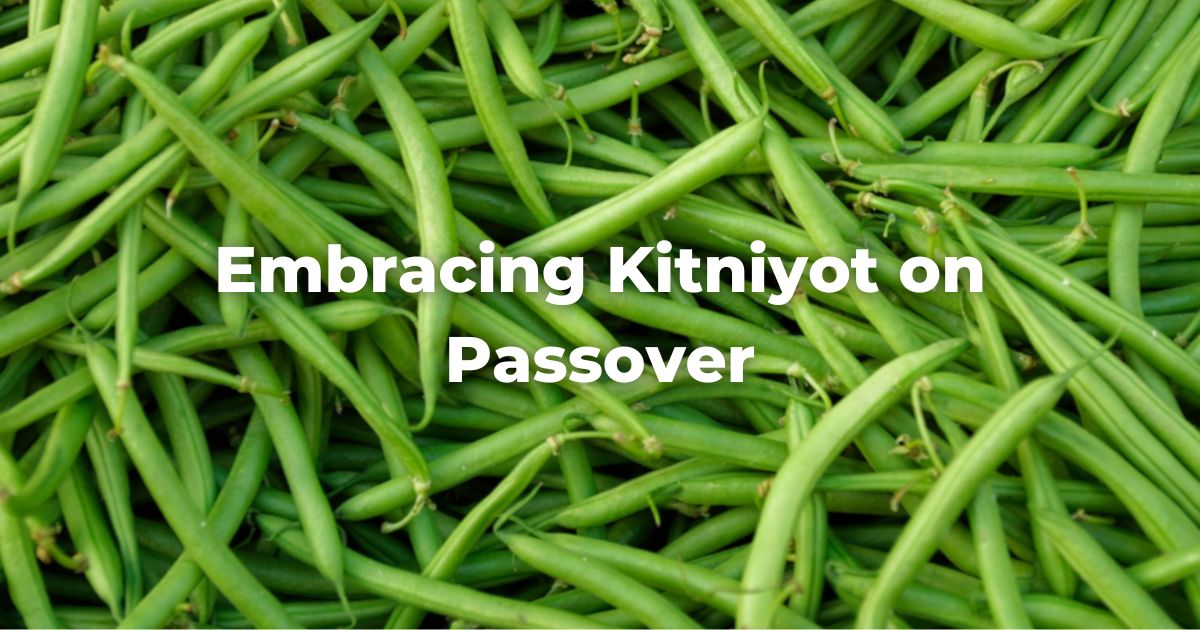A call to Ashkenazim for a richer, more inclusive celebration
Passover, or Pesach, marks one of the most significant festivals on the Jewish calendar, commemorating the Israelites’ Exodus from Egypt and celebrating freedom.
Central to its observance is the avoidance of chametz—leavened bread and products made from specific grains: wheat, barley, rye, oats, and spelt. Traditionally, Ashkenazi Jews have also avoided kitniyot—legumes, rice, seeds, and similar foods—during this period.
I believe we should embrace the inclusion of kitniyot during Passover, enhancing the celebration with diverse, nutritious, and delicious food options while aligning with contemporary Jewish thought and practice.
The prohibition against kitniyot originated in the Middle Ages, primarily as a safeguard against confusion with chametz. Rabbis were concerned that products like rice or beans could be mixed with wheat or be mistaken for chametz flour.
Importantly, this prohibition was not universally accepted; Sephardic and Mizrahi Jews have continued to consume kitniyot, reflecting different agricultural and culinary practices.
Significant rabbinic voices within the Conservative movement have revisited this issue in recent years. In 2015, the Committee on Jewish Law and Standards of the Conservative movement officially lifted the ban on kitniyot for Ashkenazim, recognizing that the concerns that led to the original prohibition are no longer relevant and that kitniyot can enhance the joy and celebration of Passover by increasing dietary and menu options.
Rabbinic Perspectives on Kitniyot
Prominent Israeli Rabbi David Golinkin has argued that the original reasons for the prohibition against eating kitniyot no longer exist and that it is high time to allow Ashkenazim, who so desire, to eat kitniyot on Passover.
His stance is rooted in a deeper understanding of halacha (Jewish law) as dynamic and responsive to changing circumstances rather than as a static set of rules. This perspective is crucial because it underscores the adaptability of Jewish tradition in the face of evolving societal and cultural realities.
Richer Menu Planning
The inclusion of kitniyot can profoundly enrich the Passover diet, which is often restrictive and can lead to gastrointestinal discomfort and nutritional deficiencies. People frequently complain about these GI issues or boring menus during Passover, but embracing kitniyot can resolve both of these age-old gripes.
Kitniyot, such as rice and legumes (beans, lentils, and peas), are excellent sources of fiber, protein, and other essential nutrients, contributing to a more balanced diet.
Moreover, the culinary diversity that kitniyot brings can transform the Passover experience from one of restrictive menus to one of gastronomic exploration.
Imagine a Passover table featuring dishes like Moroccan rice pilaf, Mexican-inspired quinoa salad with black beans and corn, or Indian lentil curry. These dishes provide nutrition and bring joy and variety to holiday meals, making the observance of Passover less about dietary limitations and more about celebration and freedom. These restrictions in and of themselves do not make Passover special, but rather, gathering with family and friends is what the festival is about—it is not supposed to be onerous.
A Personal Journey Towards Inclusion
Growing up, Passover in our home adhered strictly to the no-kitniyot rule, a testament to our Ashkenazi roots.
However, change was sparked by a simple culinary desire—my mother’s wish to have green beans at our Seder table. This seemingly modest preference led us to reevaluate our Passover traditions.
Embracing kitniyot was not just about adding variety to our diet; it was about adapting our practices to our beliefs and current lifestyles.
My father, meticulous in his observance, introduced me to a systematic approach for incorporating rice (a staple kitniyot item) that he learned from watching Syrian Jewish women in his native Brooklyn, New York. He taught me how to meticulously check rice for chametz contamination by spreading it on a dark tablecloth. This practice ensured that our adherence to Passover laws was uncompromised and symbolized a bridge between tradition and adaptation.
Now that I am a father who has celebrated Passover in my own home, these lessons have come with me as part of a new family tradition I intend to teach my son.
Respecting Tradition While Embracing Change
The decision to include kitniyot in Passover observances reflects that Jewish law and custom are dynamic and responsive to changing circumstances.
However, it is crucial to acknowledge the weight of family traditions and the emotional ties that bind us to our past. For many, the idea of changing Passover practices might feel terrifying or a departure from cherished memories or ancestral customs.
That is entirely understandable, and in such cases, starting small can serve as a practical and symbolic acknowledgment of other Jewish traditions outside of our own.
Introducing a single menu item, like green beans, allows families to test the waters without overwhelming the traditional framework they are accustomed to. This approach respects the emotional and spiritual dimensions of change, facilitating a smoother transition and broader acceptance within the family.
Of course, for those who might find the inclusion of kitniyot too significant a shift, it is perfectly valid to maintain traditional and family practices. Everyone’s journey is unique, and the choices we make should honor our individual and collective histories.
Steps Toward Change
If you are considering incorporating kitniyot into your Passover observance but are unsure about making a full commitment, here are a few steps you might take:
- Educate Yourself and Your Family: Learn about the historical and halachic perspectives on kitniyot. Consider asking parents or grandparents about the traditions they grew up with. Understanding the reasons behind the customs can open up new avenues for discussion and reflection.
- Introduce One New Dish: Choose a kitniyot-based dish to include in your Seder meal. Discuss its inclusion with your family and guests, explaining the change and its significance.
- Evaluate and Reflect: After Passover, take time to reflect on the experience. How did it feel to include kitniyot? Did it enhance your celebration? Use these insights to decide whether and/or how to expand the practice in future years.
The inclusion of kitniyot in Ashkenazi Passover observance can be a step towards a more inclusive, joyous, and meaningful celebration. It respects the dynamic nature of Jewish customs, addresses modern dietary concerns, and encourages us to acknowledge the global diversity of the Jewish people.
This Passover, let us embrace the full spectrum of Jewish culinary tradition and allow a wider range of foods to enhance our freedom festival. After all, what could be more in the spirit of Pesach than expanding our traditions to reflect our values of freedom, joy, and unity?
Author
-

Rabbi Eric Leiderman (he/they) is an award-winning community builder and Jewish educator with over a dozen years of expertise working with youth and emerging adults. He is the Midwest Regional Director of IsraelLINK, President & co-founder of Masorti on Campus, and serves on several boards of directors of national Jewish nonprofits. Eric grew up in the New York Metropolitan Area and has spent significant time in several North American Jewish communities and Israel. He currently resides in Chicago, Illinois, with his family.
View all posts






